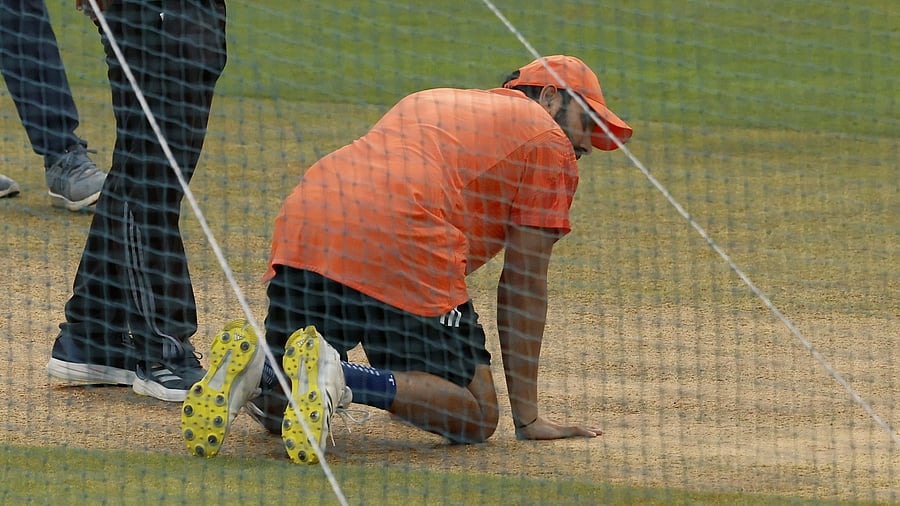
Skipper Rohit Sharma inspects the pitch on the eve of their semifinal against New Zealand.
Credit: Reuters Photo
Mumbai: A needless controversy boiled over before the start of India’s semifinal clash against New Zealand but ICC was quick to dismiss the conspiracy theories.
Just a few hours before the toss, it was revealed that the hosts chose to play their all-important game on Pitch No. 6 as opposed to the "designated" Pitch No. 7 at the Wankhede stadium.
The rotation of pitches was supposed to be 6-8-6-8-7, and that’s what International Cricket Council-appointed pitch consultant Andy Atkinson was reportedly informed would be the pitch itinerary. But Atkinson was conveyed later that the pitch couldn’t host the game due to ‘unspecified’ reasons.
An educated guess is that India wanted to play on a pitch which had already seen action - Pitch No.6 - as opposed to a fresh pitch to its right, and there is nothing in the playing conditions which says the Board of Control for Cricket in India can’t make that change.
The Pitch and Outfield Monitoring Process reads: "It is expected that venues that are allocated the responsibility of hosting a match will present the best possible pitch and outfield conditions for that match.”
According to the article in the Daily Mail, Atkinson, frustrated by the Board of Control for Cricket in India’s tendency to change pitches on a whim, shot out an email to his bosses saying the pitch changes had been made 'without proper notice or forewarning” and also raising doubts about the neutrality of the pitch for the final.
“As a result of these actions, one must speculate if this will be the first ever ICC CWC (World Cup) final to have a pitch which has been specifically chosen and prepared to their stipulation at the request of the team management and/or the hierarchy of the home nation board,” Atkinson wrote in the email, which was leaked to the publication.
“Or will it be selected or prepared without favouritism for either of the sides competing in the match in the usual manner, and unquestionably because it is the usual pitch for the occasion?”
While the issue was hotly being debated, the ICC sent out a circular legitimising India’s decision to swap pitches.
“Changes to planned pitch rotations are common towards the end of an event of this length, and has already happened a couple of times,” it read. “This change was made on the recommendation of the venue curator in conjunction with our host. The ICC independent pitch consultant was apprised of the change and has no reason to believe the pitch won't play well.”
While there seems to be some miscommunication within ICC, a BCCI official at the Wankhede revealed that they had been clear about their intentions from the get-go. In fact, it was reported earlier that Indian officials had made a specific request to BCCI curators to reduce the grass on playing surfaces for the knockouts.
That, once again, is not illegal. In fact, it’s normal for countries to set up pitches to favour them slightly. In any case, the pitch will be vetted by an ICC-appointed personnel before the teams take to the field so a case cannot be made for foul play.